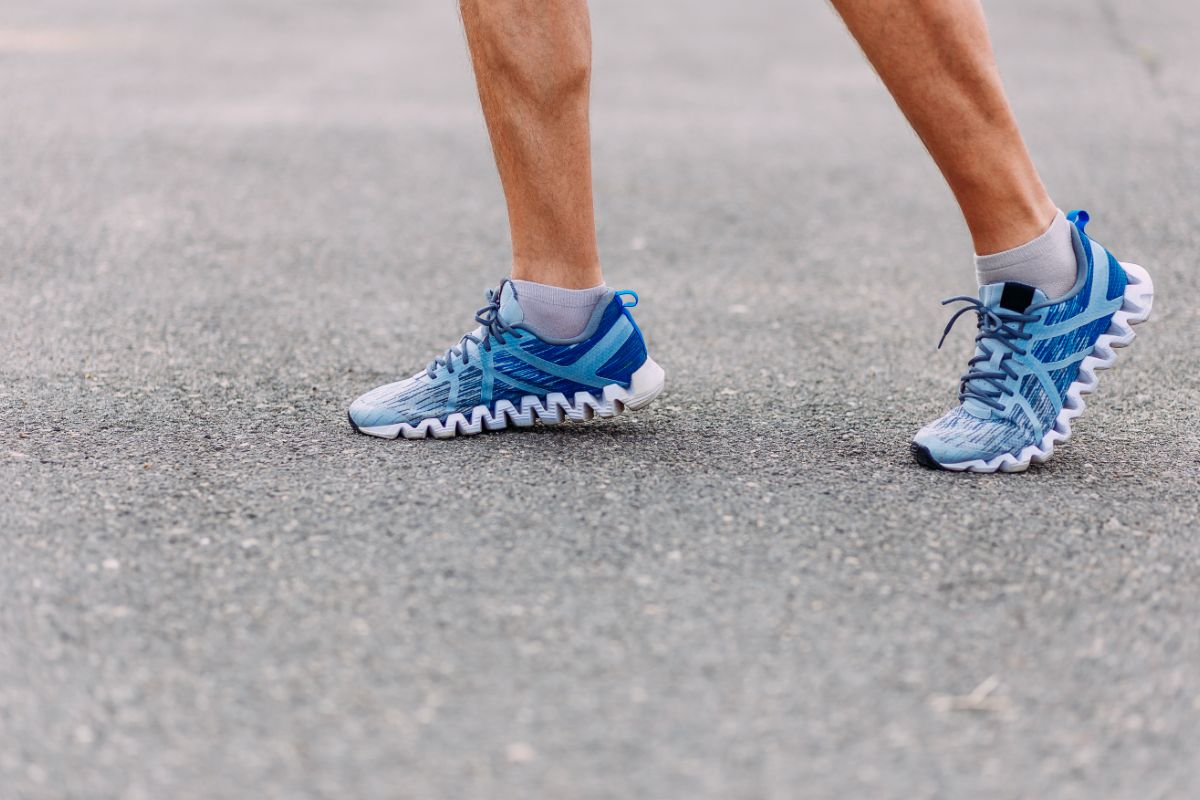Running is one of the best forms of cardio, particularly for those who don’t fancy playing sports or spending an hour in the gym.
All you need to run is a pair of good shoes, and yourself! Unless you like to carry a sports watch, you won’t need to handle other pieces of equipment.

Everyone knows how good running is for the body. Just running a mile a few times a week is enough to burn off extra energy, avoiding storing it as fat later.
But how much energy does running burn, and how many calories can you burn running a mile?
The answer isn’t a one size fits all answer; it depends on your height, how much you weigh, and how much muscle mass you have.
You’ll learn more about calorie burn and running from this article, including how many calories you burn when running a mile, as well as how to make running a part of your lifestyle.
How Many Calories Does Running A Mile Burn?
A standard estimation of calories burned after running a mile is roughly 100 calories. However, this figure will be different from person to person.
The amount you weigh is very important as this will determine how many calories you burn.
A 120-pound person burns around 11 calories every minute they run. If this person ran a mile in 10 minutes, they would burn 114 calories. This increases if the person weighs more.
A 180-pound person can burn roughly 17 calories every minute spent running. If they also ran a 10-minute mile, they would burn 170 calories.
The calories burned here are relatively stable, no matter how fast you run. For example, you might burn 400 calories running four miles at a slower, 15-minute-per-mile pace.
If you ran four miles faster, at a 7-and-a-half minute pace, you would still burn around 400 calories, just in a faster amount of time.
This means that unless you’re short on time, you don’t need to focus on running faster to burn more calories. You can burn a good amount of calories running for longer and at a slower pace.
Those who weigh more will naturally burn more energy than those who weigh less. This means that heavier people will burn more calories every mile as it takes more energy to move a larger frame.
Exercising involves using energy, which is fueled by calories. A single pound is roughly 3,500 calories.
If you’re aiming to lose weight, around a pound a week, you should attempt to burn 500 to 1,000 calories more than your calorie intake every day.
This should involve a nutritious diet plan, like junk food, though delicious, is very calorie-dense. Just one cookie can outdo all the effort you made burning calories on a run.
When it comes to calorie burn, weight matters more than intensity, but intensity can also affect calorie burn after a run.
If you exercise more intensely, your body will spend more oxygen to recover afterward.
This process is known as EPOC, excess post-exercise oxygen consumption, which also has an effect on total calorie burn within a day.
Why Running Is Good For You

It’s recommended that people spend at least 150 minutes taking on moderate-intensity aerobic activity every week. This translates to 75 minutes of high-intensity aerobic activity per week.
Running can fall into both of these categories, though this will depend on your pace and current fitness level.
Other than burning calories and keeping at a healthy weight, running has other health benefits. These include:
- Reducing cholesterol levels and blood pressure, lowering the risk of heart disease
- Reducing osteoporosis risk
- Improved mental health conditions, including anxiety and depression
How To Start Running
After looking at the calories running can burn, along with its potential health benefits, you might be tempted to start running. However, if you’re a beginner, you’ll need to start slowly.
Before we can get into how to start running, remember to talk to your doctor or a medical professional about starting a new exercise regimen. This is particularly important if you live with any chronic health issues.
To run correctly without risking injury, you’ll need to purchase running shoes. These aren’t like your usual walking, tennis, or bowling shoes.
Running shoes are designed to support the foot properly while running. This helps cushion any shocks to the feet, preventing knee and feet issues later.
Running shoes are available in several different styles. If you’re looking for your own pair, try on as many brands as you can so you understand what works best for your feet.
Some specialty running stores let you test running shoes on a treadmill in their store.
If you’re struggling with choosing a pair, your trainer or doctor can advise you on what to look for in your shoes.
Once you’ve bought a pair of running shoes, you can begin training. A good plan for beginners is to start with a swift walk, then add running intervals as you go on.
For instance, you could walk for 5 minutes, jog for 45 seconds, then go back to walking again. Repeat these stages a few times.
As you progress, you may be able to shorten your walking intervals or jog for longer. Build up your endurance with every workout, then you may be able to run a full mile within a few months!
Final Thoughts
It’s hard to come up with the exact amount of calories burned after a mile, as this will be different for everyone depending on their weight.
You can work out a rough estimate by using trackers or calculators online. After you enter your height and weight, the device will give you a number as to how many calories you might burn running.
However, take this data with a pinch of salt. These devices won’t account for your body fat percentage or the amount of muscle you have. People with more muscle will burn more calories than people who weigh less.
It’s best to use this information as a tool on your fitness journey, just don’t take the numbers as concrete facts.
- Can Dogs Run Faster Than Humans? (Running With Your Furry Friend) - October 4, 2022
- 10 Doggie Fun Runs You Will Love [Ultimate Guide] - October 4, 2022
- What Are Division Results In Running? - October 4, 2022








